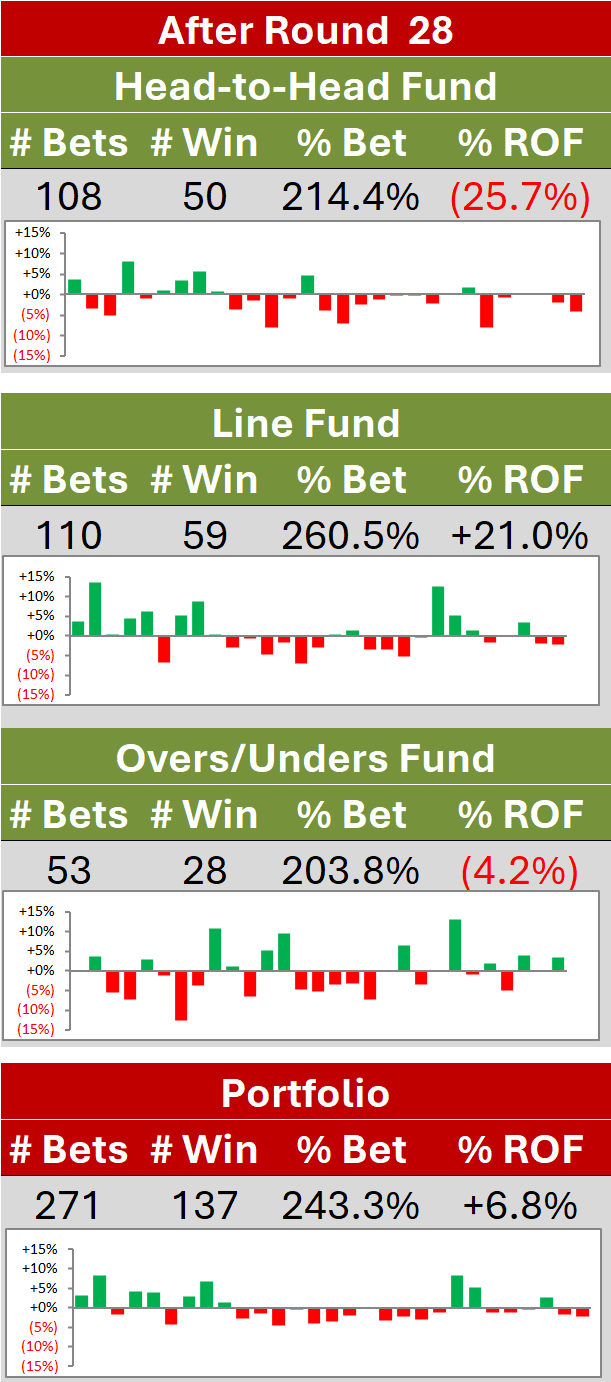Pick the Teams' Finishing Order Competition
/A while back I mentioned that we'd be running a competition this year in which the aim will be to predict the finishing order of all 16 teams. The winner will be the person whose predictions are closest to the actual ladder positions at the end of the home and away season.
Here are the logistics of the competition:
- Entry is free. (I was considering charging a nominal entry fee and using this to create a prize pool but I thought a free competition would encourage higher levels of participation.)
- To be eligible, entries must be received by me by midnight on Wednesday, May 6th. That means you'll be able to use the ladder as at the end of Round 6 as the basis for your predictions.
- An entry comprises a finishing order for all 16 AFL teams.
- Only one entry is allowed per person.
- Order will be determined by the Kendall's tau measure as described below.
- The final ladder positions for the teams will be those published on the www.afl.com.au site at the end of the home and away season.
- The prize? You'll gain the people's ovation and fame forever (with apologies to Iron Chef).
Okay, so that's the logistics. Now for some detail. (You can safely skip the remainder of this blog if you're not interested in how we'll decide on a winner.)
To judge the winner we need a measure of proximity for two rankings so that we can compare each entrant's predicted ranking with the ranking provided by the competition ladder. The statistical community has a number of such measures in its armoury, one of which is called Kendall's tau and this is the measure that I'll be using to determine whose predictions are closest to the final ladder.
Kendall's tau is based upon the notions of concordance and discordance. Imagine that, in my predictions, I've placed Team A above Team B. Then, if the end of season ladder has Team A finishing above Team B (with any number of teams in between), my rankings of Team A and B are said to be concordant with the final ladder. If instead, Team B finishes ahead of Team A, my rankings of Team A and B are then said to be discordant with the final ladder.
Now imagine that I considered every possible pair of teams and I counted the number of concordances and discordances in my rankings compared to the final ladder. Kendall's tau is defined as the difference between the number of concordances and the number of discordances, divided by the total number of possible pairs of teams.
The closer is Kendall's tau to 1, the closer my predictions match the final ladder; the closer it is to 0, the more random my predictions are relative to the final ladder; and the closer it is to -1, the closer my predictions are to a reverse ordering of the final ladder, an outcome that would surely be far more embarrassing than registering a zero. The winner of our competition will be the person with the greatest Kendall's tau.
A small example might help to clarify all this. So, let's assume that there were only six teams in the competition, imaginatively named A through F. Then, say I predicted they'd finish B, F, D, A, C, E but that they instead - with a commendable sense of order - actually finished A, B, C, D, E, F.
Now, there are 15 possible pairs of teams that we can consider, and my predictions are concordant with the actual finishing order for 8 of these pairs (A&C, A&E, B&C, B&D, B&E, B&F, C&E and D&E) and discordant for 7 of them (A&B, A&D, A&F, C&D, C&F, D&F and E&F). My Kendall's tau would therefore be (8-7)/15 or about 0.07, which is barely better than the chance score of 0.
Somebody else who predicted a finishing order of B, A, D, E, C, F would, instead, register a Kendall's tau of 0.6, having just 3 discordances and 12 concordances. I think it's fairly apparent that this latter ordering is far closer to the actual ordering than was mine.
One of the nice properties of Kendall's tau is that it has a probabilistic interpretation. If the Kendall's tau calculated for your predictions is K then the probability of concordance between your predictions and the ladder for any two randomly chosen teams is (K+1)/2. So, for the example just presented where K was 0.6 this probability would be 0.8, which could also be derived by noting that there were 12 concordances in the 15 possible pairings and 12/15 = 0.8.

